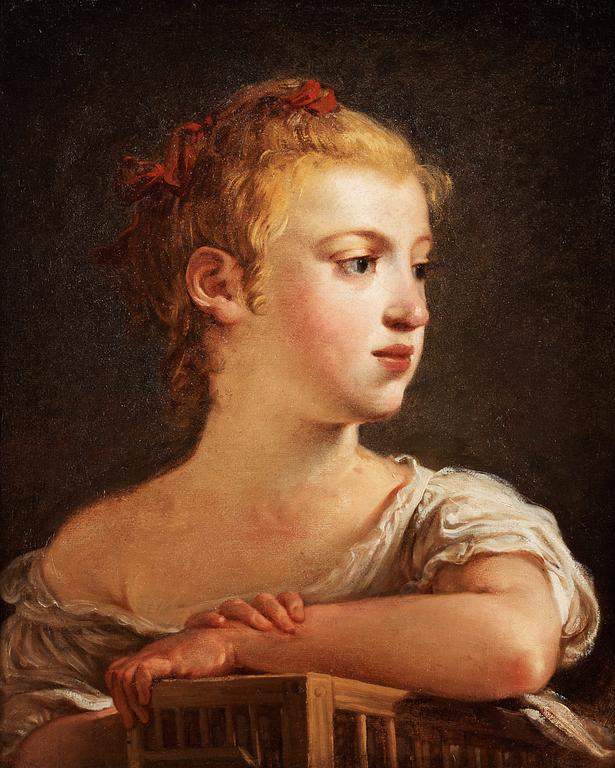Jean Hugues Taraval
Portrait of a young woman
Signed Traval. Relined canvas 47x 39 cm.
Näyttelyt
Musée Palais Galliera, Paris, 1973, cat no 38, reproduced in the catalog.
Muut tiedot
This charming children's portrait shows Jean Hugues Taraval its perfection as a mediator of rococo expression and ideals. We see a young, red-haired girl with eyes fixed in the distance seems to be completely cut off and unaware of the artist's presence. A soft light falls in from the side and lights up the girl's face and left shoulder. Her skin shimmers in hot pink and creamy white denominations and are depicted in the most natural manner that we can almost feel her soft rosy cheeks’. The unruly hair is kept away from the face of a red silk ribbon and on the plump lips gives a shadow of a smile. Fingers and arms and cheek curves reveals that the model is still a child, but her eyes and facial expression shows a certain maturity. Although attitude implies certain patience - maybe it's not the first time she sits for the artist.
The girl, who is simply dressed in a white blouse or robe, resting his arms on a bird cage. Possibly it was this girl a kitchen maid, whose job was to feed the birds that were reared in the household. In the higher social circles, it was common during the 1700s to exotic birds held in aviaries for so-called upper-class amusement - an expression of the rococo period enthusiastic interest in exoticism. But the painting's sparse background and everyday intimate nature of the former interpretation more likely.
































